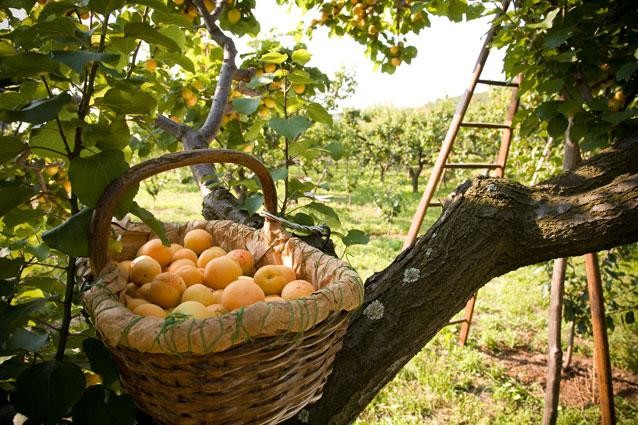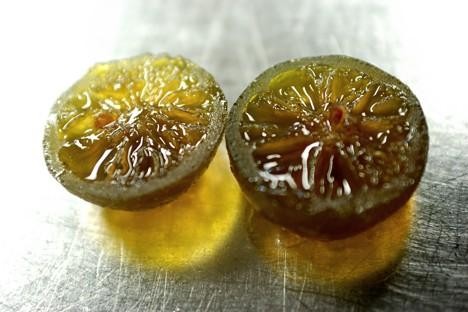LIGURIA
Albenga Violet Asparagus
The large spears of Albenga violet asparagus are a deep purple color, fading to cream at the base of the
stalk. This unique variety is cultivated completely by hand, and harvested from mid-March to early June.
Soft and buttery, without the stringiness of some other varieties, this asparagus is excellent briefly boiled
then dipped in extra-virgin Taggiasca olive oil or as an accompaniment to more subtly flavored dishes,
such as boiled, steamed or roasted fish; white meat or refined sauces.
Production area: Albenga plain, Province of Savona
For information on excursions or tours for this Presidia info@bluerental.it
Badalucco, Conio and Pigna Beans
Grown on terraces inland from Imperia, these three types of bean all are very similar, their differences
relating mainly to size and shape. Pigna beans are kidney-shaped and slightly larger than Conio and
Badalucco, which are oval-shaped and smaller. All are fleshy, soft and delicate, and excellent fresh or
dried. They are best boiled and served with extra-virgin olive oil, while the most typical local recipe pairs
the beans with goat.
Production area: Municipalities of Badalucco, Montalto Ligure, Castel Vittorio and Pigna and the village
of Conio in the Municipality of Borgomaro, Province of Imperia
Presidium supported by: Badalucco, Conio and Pigna Beans Consortium
For information on excursions or tours for this Presidia info@bluerental.it
Bitter Orange Flower Water
Until the 1950s, the landscape of Vallebona, like other areas along the French border, was characterized
by bitter orange tree orchards. In late spring, hundreds of women used to flock to these gardens to pick
the freshly blossomed orange flowers and bring them to local distilleries. Bitter orange flowers are used
for an extract of essential oil for cosmetics, while the water is consumed as a drink or in the preparation of
sweets. The rise of synthetic flavorings and the frosts over the last thirty years have almost brought this
production to extinction. The Presidium was created to support a young distiller who restarted this
business. The aim is to involve local farmers and bring bitter orange trees back to Vallebona.
Production area: municipality of Vallebona (Province of Imperia)
Presidium supported by: Fondazione Carige – Progetto Mare Terra di Liguria
For information on excursions or tours for this Presidia info@bluerental.it
Brigasca Sheep Tomas
The Brigasca sheep is a local breed from the territory on the borders of Liguria and Piedmont in Italy and
Provence in France. Descended from the same stock as the Frabosana and Langhe breeds, the Brigasca is
a hardy sheep, perfectly adapted to the traditional rearing system, which includes a minimum of six
months in alpine pastures. Its milk is used to make three different kinds of cheeses: Sora, Toma and Brus.
All are made with techniques and tools closely linked to the ancient tradition of transhumance, the
seasonal migration of livestock.
Production area: Imperia valleys and mountain pastures near the French border
For information on excursions or tours for this Presidia info@bluerental.it
Cabannina Cow
The Cabannina is the only truly authentic native Ligurian cattle breed, originating in the Aveto Valley
inland from Chiavari. Here there is a small hamlet in the municipality of Rezzoaglio called Cabanne,
where the inhabitants of this handful of houses are said to have selected the best animals over time. While
at the beginning of the 19th century there were about 40,000 Cabannina cows, now only 200 remain. It
is a small hardy breed, with a dark coat displaying a characteristic light stripe on its back. It is an
excellent breed for the poor pastures of the area and has only just been saved from extinction. Its milk is
used to produce a traditional raw milk cheese.
Production Area: Aveto Valley (province of Genoa)
Presidium supported by: Sea and Land of Liguria project – Carige Foundation
For information on excursions or tours for this Presidia info@bluerental.it
Camogli Tonnarella
Tonnarella boasts centuries of history in Camogli. A fishing method similar to but simpler than the use of
fishing nets, fishers use a net made of coconut fiber that are cast at sea for about six months, from April to
September. The net is raised three times a day - at dawn, in the morning and in the afternoon. It is a
traditional fishing technique and highly sustainable as only medium-large sized fish remains caught in the
nets. The tonnarella used in Camogli in the region of Liguria is one of the few active in Italy. The Presidium
was created to support the activities of fishers who still maintain this tradition.
Production area:Punta Chiappa, in the sea near Camogli (Province of Genova)
Presidium supported by: Sea and Land of Liguria project – Carige Foundation
For information on excursions or tours for this Presidia info@bluerental.it
Dried Calizzano and Murialdo Chestnut
The technique of drying chestnuts in tecci, small stone huts with pine roofs, was once common throughout
the Ligurian Apennines and Piedmontese Alpine valleys, and the tradition lives on in the Bormida Valley.
The chestnuts are smoked for about two months over low fires fueled by chestnut prunings and husks. They
are either eaten dried, after being softened in a little milk, or used in cookies, preserves and ice cream. At
Christmas, it is traditional to eat viette, dried chestnuts soaked in water for five hours.
Production area: Upper Bormida Valley, Province of Savona
For information on excursions or tours for this Presidia info@bluerental.it
Noli Anchovies
Called cicciarelli in Italian, these anchovies are also known as lussi or lussotti in the local Noli dialect.
These anchovies have traditionally been fished along the coastline using a kind of trawl net called a
sciabica. One boat floats over the fish, while another surrounds them with the net in a horseshoe shape.
Small, tapered and silver in color, the fish are excellent prepared in carpione (marinated in vinegar) or
fried. The Presidium wants to give value to an excellent fish and save a very ancient technique that
involves the use of the traditional sciabica fishing net. It also promotes a large campaign in defense of
small scale fishing in the Meditteranean sea.
Production area: Municipalities of Finale Ligure, Noli and Sportorno, Province of Savona
For information on excursions or tours for this Presidia info@bluerental.it






